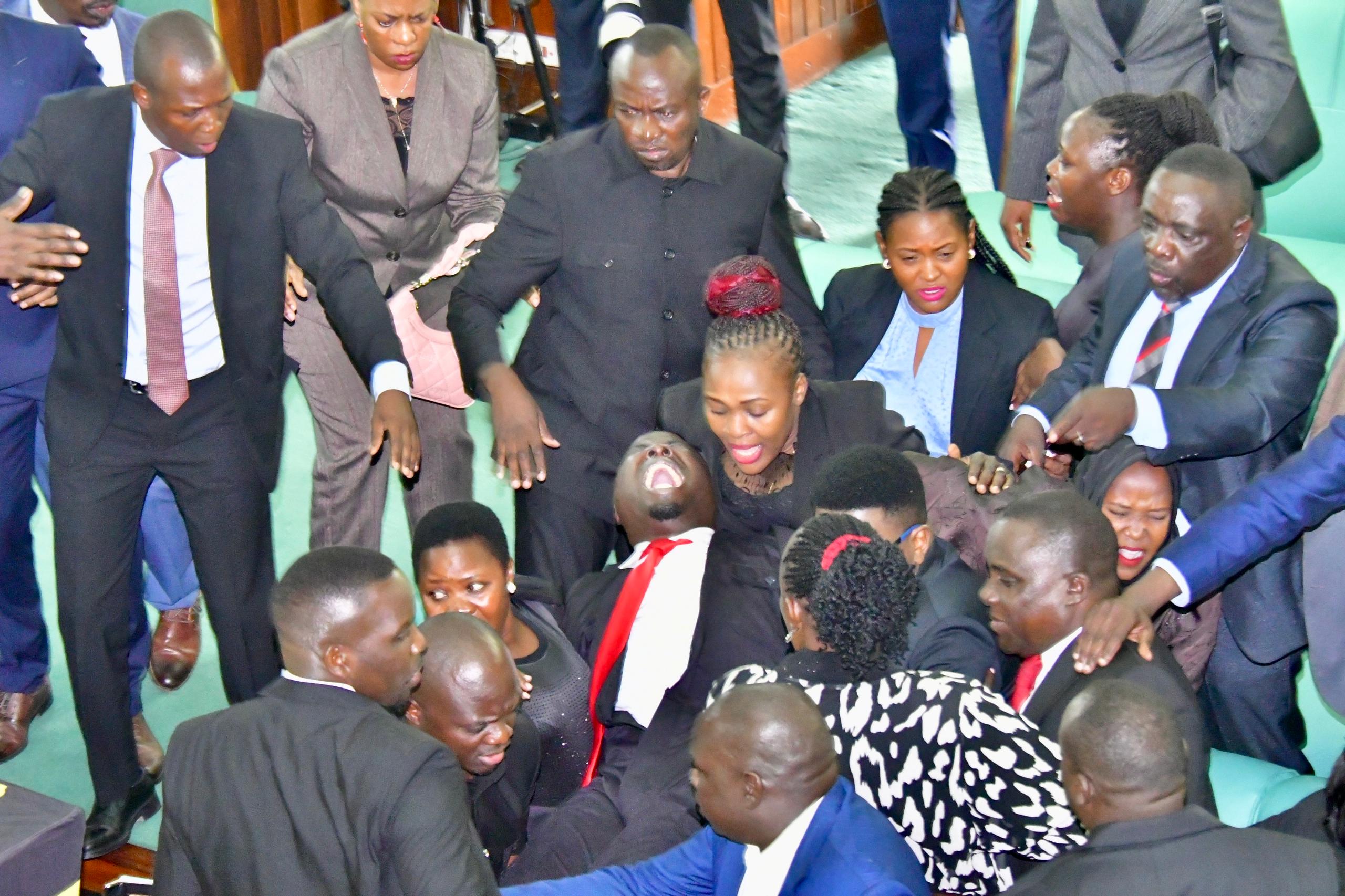Why Lango needs more effort to attain HIV reduction target

A health worker draws blood from a man to test for HIV in Kampala on September 9. PHOTO | ISAAC KASAMANI
What you need to know:
- Mr Sam Opira, the Apac secretary for health and education, said the district has registered 809 new HIV infections. In Apac, a total of 9,647 HIV clients have been enrolled on treatment, while the prevalence rate stands at 7.2 per cent.
Lango sub-region is struggling to meet expected 2025 target for reduction of new HIV infections, Monitor has learnt.
The Joint United Nations Programme on HIV/AIDS (UNAIDS) set the 95-95-95 targets with the aim that by 2025, 95% of all people living with HIV will know their HIV status, 95% of all people with diagnosed HIV infection will receive sustained antiretroviral therapy ART and 95% of all people receiving ART will have VLS.
However, the November 2023 district status reports for Kole, Otuke, Amolatar, Alebtong and Oyam districts show that district local governments are facing numerous challenges in their efforts to reduce the risk for new HIV infections.
While the Ministry of Health has made notable progress in shaping responses and strategies to address the HIV/AIDS epidemic in the country, Otuke has registered 62,507 new HIV infections. Of these, 40,816 are females, while 21,691 are males. In Oyam, at least 1,618 are new HIV infections of which 1,025 are females and 593 males. In Amolatar, 2,954 new HIV infections of which 1,919 females and 1,035 males have been registered.
Mr Sam Opira, the Apac secretary for health and education, said the district has registered 809 new HIV infections. In Apac, a total of 9,647 HIV clients have been enrolled on treatment, while the prevalence rate stands at 7.2 per cent.
Mr Opira says as part of the interventions to address HIV/Aids, they have been conducting massive sensitisation on preventive measures such as; ABC, change of lifestyle, use of PrEP (pre-exposure prophalaxis), among others.
“Screening at entry points like out-patient department, antenatal care and maternity, condom distribution, prevention of mother to child transmission (PMTCT) and elimination of mother to child transmission (EMTCT),” he says. Adding that they are;
“Creating more community drug distribution points with the help of our implementing partners like Local Partner Health Services (LPHS-Lango &Kigezi), among others.”
Just like Apac, there are several interventions being implemented in other districts in Lango sub-region to support in addressing HIV/AIDS.
In Otuke, for instance, HIV counselling and testing services are being carried out at community level through outreaches and health facilities, according to the district status report of November 1, 2023.
There is an ongoing provision of comprehensive HIV care and treatment services through provision of ARVs and other medicines to treat opportunistic infections.
Mr Francis Abola, Otuke LC5 chairman, says they are carrying out interventions guided by PMTCT and EMTCT policy guidelines, HIV test, treat and track policy guided by presidential initiative.
“We are also doing viral load testing and monitoring of HIV patients that are enrolled on medication. Data analysis and use to informed decision-making and planning for clients,” he says.
Mr Geoffrey Ocen, Amolatar LC5 chairman, says a total of 8,706 people between the ages of 15 and 19 have undergone HIV counseling and testing in the area.
A total of 407 children benefited from HIV counseling and testing services in Amolatar, with additional 348 children out of 7,371 HIV clients enrolled in treatment.
“As part of the interventions to fight HIV/AIDS, 407 people have benefited from the safe male circumcision programme,” Mr Ocen adds.
In Oyam, the district chairperson, Mr Benson Walter Dilla said they have a draft HIV workplace policy and several functional HIV/AIDS committees to ensure monitoring and effective utilisation of the allocated resources.
Among the interventions implemented by Oyam District leadership in addressing issues of HIV/AIDS prevention include care and treatment, social support and protection; system strengthening, monitoring, evaluation and research, he says.
Mr Moses Fred Ogwal, the founder of Union of Hope – a community based organisation – says their initiative works towards creating a bicycle movement for HIV positive women and children because bicycles provide a mode of transportation to the HIV positive people.
“If you see most of the people who are HIV positive, they have been considered to be a community misfit – that means they are less productive in the community,” Mr Ogwal says.
“So, as an organisation, we felt there was a need for mobility – and that is offering a mode of transport because most of them walk on foot, approximately 15 to 20 kilometres away from the health facilities to collect their antiretroviral drugs (ARVs), or to see a medical doctor,” he adds.
So far, Union of Hope has distributed 1,700 bicycles to HIV positive women and children in Apac and Kwania in the last five years.
“And the basis is that when we give a bicycle, we believe that it will provide access to healthcare, treatment, and also a bicycle provides access to education. Like the families that have children are able to carry their children on the back of the carrier and be able to reach school, improved performance and attendance of the HIV positive children,” Mr Ogwal explains.
Nonetheless, the fight against HIV/AIDS still poses enormous challenges more than even in the Lango Sub-region, generating fears that success may be too difficult to attain.
While impressive reports from different development partners seem to suggest that, the situation is under control. On the ground, things are pretty different.
Data from nine districts that make up the Lango Sub-region reveals that the region’s Aids epidemic has hit a record high, with thousands of people becoming newly infected each year.
HIV prevalence in Lango varies from 5.5 per cent in Otuke to 7.2 per cent in Apac District.




